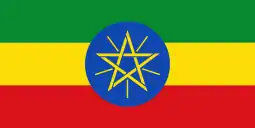| Beretta BM59 | |
|---|---|
 BM59 battle rifle | |
| Type | Battle rifle |
| Place of origin | Italy |
| Service history | |
| In service | 1959–present |
| Used by | See Users |
| Wars | Nigerian Civil War[1] Anti-guerrilla operations in Indonesia Indonesian invasion of East Timor Lebanese Civil War Falklands War Multinational Force in Lebanon[2] Somali Civil War Libyan Civil War |
| Production history | |
| Designer | Domenico Salza |
| Designed | 1950s |
| Manufacturer | Beretta, Bandung Weapons Factory, Defence Industries Corporation |
| Unit cost | $42 (1962)[3] |
| Produced | 1959 |
| Variants | Mark I, Mark II, III/Ital TA, BM59-Para, Mark IV, BM59E |
| Specifications | |
| Mass | 4.4 kg (9.70 lb) |
| Length | 1,095 mm (43.1 in) |
| Barrel length | 491 mm (19.3 in) |
| Cartridge | 7.62×51mm NATO |
| Action | Gas-operated, rotating bolt |
| Rate of fire | 750 rounds per minute |
| Feed system | 20-round detachable box magazine |
| Sights | Rear aperture, front post |
The BM59 is an automatic battle rifle developed in Italy in 1959. It is based on the M1 Garand rifle, chambered in 7.62×51mm NATO, modified to use a detachable magazine, and capable of selective fire.[4] Later revisions incorporated other features common to more modern rifles.
Development
After World War II, Italy adopted the US-designed M1 Garand rifle in .30-06 Springfield (7.62×63mm) and also manufactured it under license. This semi-automatic rifle proved itself well during World War II, but in the late 1950s it was considered outdated and obsolete and the Italian military also wanted a new rifle chambered for the NATO-standard 7.62×51mm round.
To meet these requirements, Beretta designed the BM59, which was essentially a rechambered M1 fitted with a removable 20-round magazine, folding bipod and a combined muzzle brake/flash suppressor/rifle grenade launcher. The BM59 is capable of selective fire.
The BM59 was adopted in 1959 and served with Italian, Argentinian, Indonesian, and Moroccan armies. In the early 1980s, semi-automatic versions were imported to the United States and sold to private collectors. The earliest BM59s were manufactured from U.S.-manufactured M1 parts, including re-chambered barrels.
Beginning in 1990, the BM59 was replaced in Italian service by the Beretta AR70/90 assault rifles, although some may be in service in the Italian Navy.
Variants
The BM59 has several military and civilian variants that include the following:[5]
Military
- BM59 Mark I: had a wooden stock with a semi-pistol grip stock.
- BM59 Mark II: had a wooden stock with pistol grip to achieve a better control during full-auto fire;
- BM59 Mark III: or Ital TA (also known as the Truppe Alpine), was a variant with a pistol grip and a metallic folding buttstock, that was intended for mountain troops. The BM59 Para was similar to BM59 Ital TA, but was intended for paratroopers. It was equipped with a shorter barrel and a removable flash-hider.
- BM59 Mark IV: had a heavier barrel with a plastic stock, and was used as a light squad automatic weapon.
- BM59E: conversion of customer supplied rifles, maintained the Garand long barrel and front handguard and had no grenade launching devices. Only country to adopt this version was the Argentine Navy with approximately 2100 converted rifles originally supplied with American war ships purchased by Argentina during the 50's and 60's.
Civilian
The rare BM62 and BM69 are civilian sporting rifles with the grenade launcher and sights removed.[6] with the following:
- BM62: Semi-auto chambered in .308 Winchester (commercial variant of 7.62×51mm NATO), came with 20-round magazines, civilian flash hider (no bayonet lug, no grenade launcher, no tri-compensator (extremely rare to have gas cylinder with bipod capability) [7] Does not normally have bipod capability on gas cylinder, or gas-compensator[6]
- BM69: Semi-auto with a bipod and tri-compensator.[6]
 The BM59 (top left) on display at the Museo de Armas de la Nación, Buenos Aires
The BM59 (top left) on display at the Museo de Armas de la Nación, Buenos Aires
Users

 Algeria[8]
Algeria[8] Argentina: Used in the Falklands War.[6]
Argentina: Used in the Falklands War.[6] Bahrain[8]
Bahrain[8] Biafra: Some ex-Nigerian Army rifles[9]
Biafra: Some ex-Nigerian Army rifles[9] Eritrea[8]
Eritrea[8] Ethiopia[8]
Ethiopia[8] Italy[8]
Italy[8] Indonesia: Built Under license at the Bandung Weapons Factory as the SP-1 (BM59 Mk I), SP-2 (BM59 Mk I with rifle grenade system) and SP-3 (BM59 Mk IV).[6][10]
Indonesia: Built Under license at the Bandung Weapons Factory as the SP-1 (BM59 Mk I), SP-2 (BM59 Mk I with rifle grenade system) and SP-3 (BM59 Mk IV).[6][10] Libya[8]
Libya[8] Morocco:[8] Built under license[11]
Morocco:[8] Built under license[11] Nigeria: Under license by Defense Industries Corporation in Kaduna.[12] Adopted by Nigerian Army in 1963.[1]
Nigeria: Under license by Defense Industries Corporation in Kaduna.[12] Adopted by Nigerian Army in 1963.[1] Somalia[13]
Somalia[13]
See also
References
- 1 2 Jowett, Philip (2016). Modern African Wars (5): The Nigerian-Biafran War 1967-70. Oxford: Osprey Publishing Press. p. 20. ISBN 978-1472816092.
- ↑ McNab, Chris (2002). 20th Century Military Uniforms (2nd ed.). Kent: Grange Books. p. 158. ISBN 1-84013-476-3.
- ↑ McCollum, Ian. "BM59: The Italian M14". youtube.com. Forgotten Weapons. Retrieved 2022-05-15.
- ↑ "BM59". a-human-right.com. Volkstudio, TN. Retrieved 2008-10-05.
- ↑ "Beretta BM59 (Italy)". modernfirearms.net. Archived from the original on 2009-06-05. Retrieved 2008-10-05.
- 1 2 3 4 5 "Beretta's BM59 – The Ultimate Garand" (PDF). gunsmagazine.com. Guns. Archived from the original (PDF) on 2009-03-25. Retrieved 2008-10-05.
- ↑ "Beretta BM62". securityarms.com. Archived from the original on 2012-06-30. Retrieved 2008-10-05.
- 1 2 3 4 5 6 7 Jones, Richard D. Jane's Infantry Weapons 2009/2010. Jane's Information Group; 35 edition (January 27, 2009). ISBN 978-0-7106-2869-5.
- ↑ Jowett 2016, p. 59.
- ↑ "Perjalanan Terwujudnya Senapan Serbu Nasional Buatan Pindad". airspace-review.com (in Indonesian). 28 June 2018. Retrieved 9 June 2021.
- ↑ "Fusil Beretta BM 59". Encyclopédie des armes : Les forces armées du monde (in French). Vol. XII. Atlas. 1986. p. 2763.
- ↑ "German Small Arms: The Nigeria-Connection". bits.de. 2008-03-10.
- ↑ "Armi - FAL BM 59". smalp155.org (in Italian).
